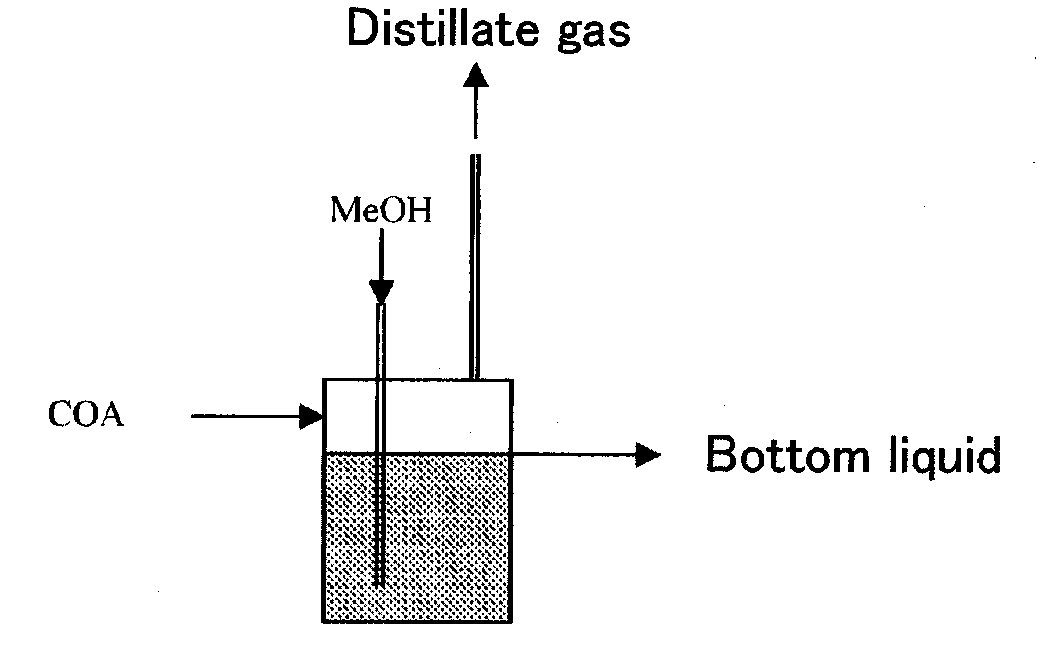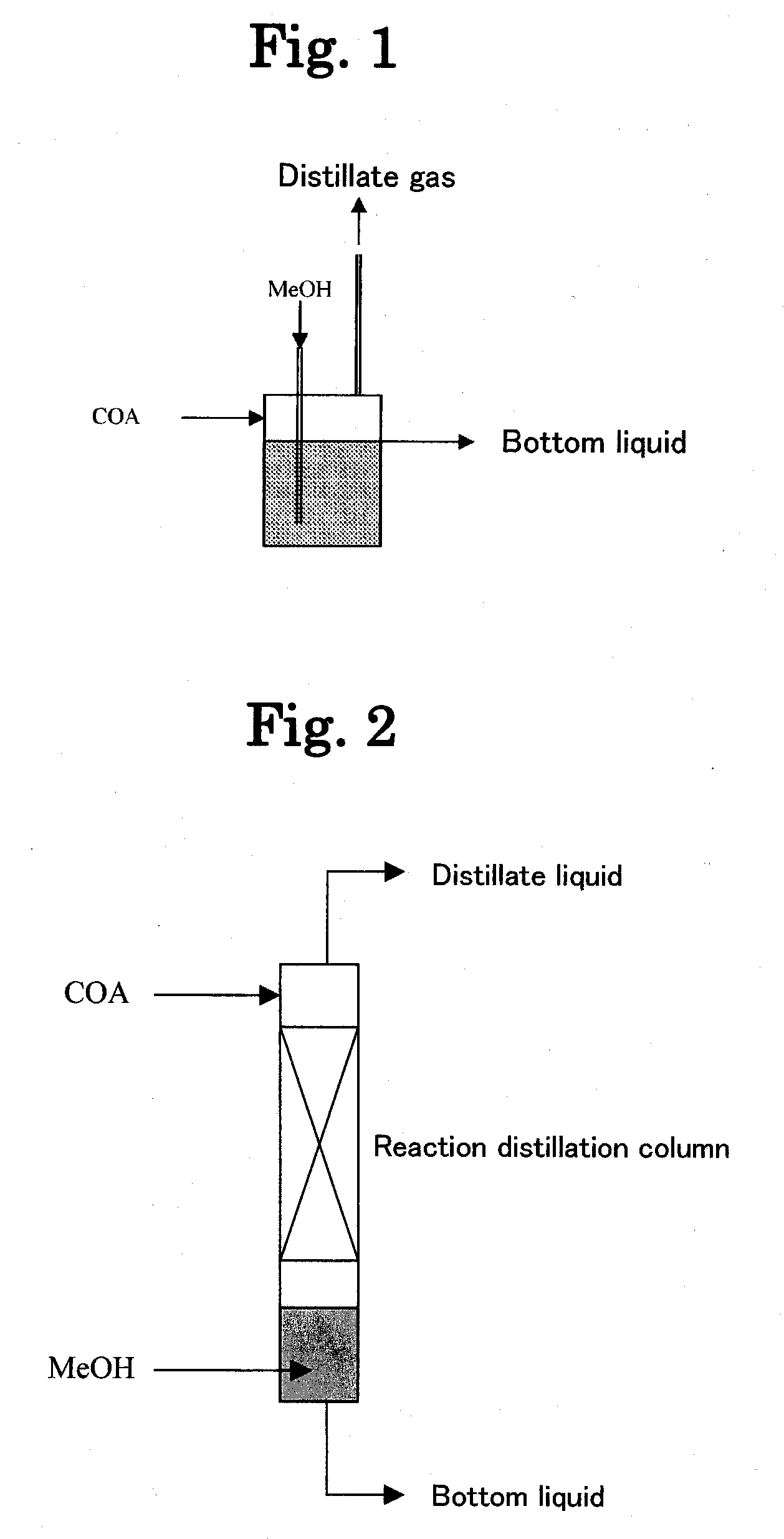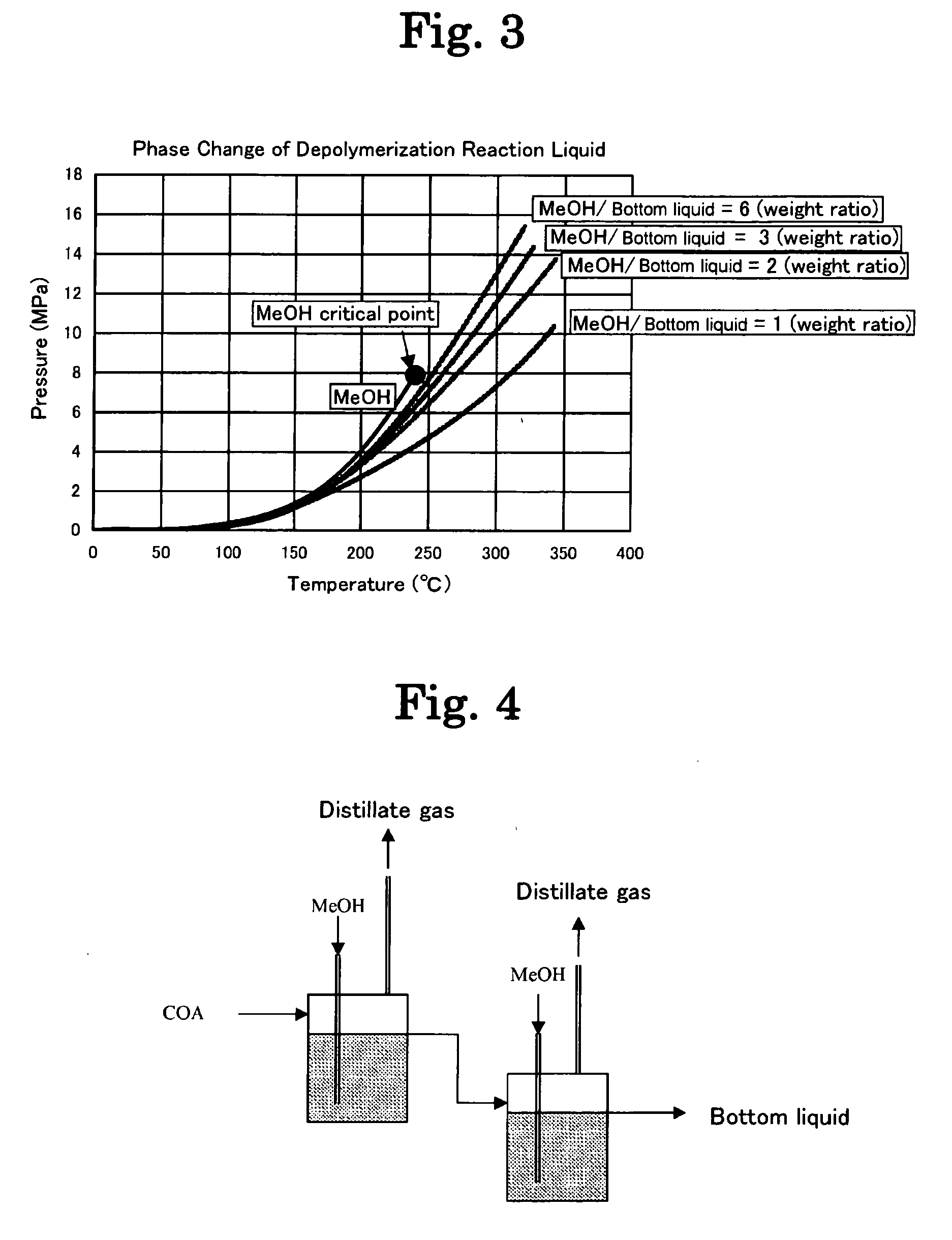Production Process of 1,6-Hexanediol
a production process and technology of hexanediol, applied in the preparation of oxygen-containing compounds, purification/separation of oxygen compounds, organic chemistry, etc., can solve the problems of considerable time being required for depolymerization, similar effects appearing on the polymerization rate, and corrosion of the reaction vessel by water, carboxylic acids and acid catalysts, etc., to achieve significant improvement of reaction rate, efficient esterification, and inhibit corrosion of reaction vessels
- Summary
- Abstract
- Description
- Claims
- Application Information
AI Technical Summary
Benefits of technology
Problems solved by technology
Method used
Image
Examples
example 1
[0088]The following provides a more detailed explanation of the present invention through examples thereof.
[0089]Step 1: Oxidation of Cyclohexane and Extraction with Water
[0090]Cyclohexane was oxidized under conditions of 160° C. and 1 MPa and then extracted using water under conditions of 160° C. and 1 MPa to obtain a carboxylic acid mixture having the composition indicated below.
Aqueous extract of cyclohexane oxide
[0091](Composition of Aqueous Extract)
[0092]Valeric acid: 0.1% by weight
[0093]5-hydroxyvaleric acid: 0.11% by weight
[0094]Caproic acid: 0.02% by weight
[0095]Succinic acid: 0.3% by weight
[0096]6-hydroxycaproic acid: 3.8% by weight
[0097]Glutaric acid: 0.3% by weight
[0098]Adipic acid: 2.7% by weight
[0099]1,2-cyclohexanediol: 0.02% by weight
[0100]1,4-cyclohexanediol: 0.04% by weight
[0101]Other: Water and trace components
[0102]Step 2: Concentration of Aqueous Extract
[0103]Next, the subject extract was concentrated under conditions of 13 KPa to obtain a concentrate having the ...
example 2
[0184]A study was made of the effect of water content on the acid value (AV) of the resulting bottom liquid (reaction liquid) and distillate gas by changing the amount of water in the methanol used in the esterification step of Step 3 in Example 1. The study was made under the conditions of a temperature of 200° C. or 240° C., pressure of 1.0 MPa, and 1:1 ratio of methanol to carboxylic acid mixture. The results are shown in Table 1. The acid values (AV) of both the bottom liquid and distillate gas tended to increase as the water content in the methanol increased.
TABLE 1Effect of Water Content in MeOH (Two-tank gas-liquid stirring tank)Bottom liquidMeOH / LiquidanalyticalDistillate liquidReactionH2OCOAresidencevaluesanalytical valuestankin MeOHPressureWeightTemperaturetimeAVH2OAVH2ODMAMOC—wt %MParatio° C.hmgKOH / gwt %mgKOH / gwt %wt %wt %1st tank0.1112001.2941.13.811.92.80.81st tank3.5112001.21021.63.513.82.60.71st tank5112001.21041.74.4162.70.72nd tank0.1112400.7230.12.937.62.82nd tank1...
example 3
[0185]A study was made of the effects on the acid values (AV) of the resulting bottom liquid (reaction liquid) and distillate gas by changing the reaction type to an one-tank system (FIG. 1), a two-tank system (FIG. 4) and a reaction distillation system using a reaction distillation column (FIG. 2) in the esterification step of Step 3 in Example 1. The results are shown in Table 2. The best acid values were demonstrated to be obtained with a two-tank system.
TABLE 2Effect of Reaction TypeBottom liquidLiquid phaseanalyticalDistillate liquidReactionMeOH / COAresidencevaluesanalytical valuestypePressureWeightTemperaturetimeAVH2OAVH2ODMAMOC—MParatio° C.hmgKOH / gwt %mgKOH / gwt %wt %wt %One-tank type1.512402.24516.114.24.91.6Two-tank type1.512401.4170.42.54.66.52.3Reaction1.512400.7220.434211.90.6distillationNote:DMA: Dimethyl adipate,MOC: Methyl 6-hydroxycaproate
PUM
| Property | Measurement | Unit |
|---|---|---|
| acid value | aaaaa | aaaaa |
| pressure | aaaaa | aaaaa |
| temperature | aaaaa | aaaaa |
Abstract
Description
Claims
Application Information
 Login to View More
Login to View More - R&D
- Intellectual Property
- Life Sciences
- Materials
- Tech Scout
- Unparalleled Data Quality
- Higher Quality Content
- 60% Fewer Hallucinations
Browse by: Latest US Patents, China's latest patents, Technical Efficacy Thesaurus, Application Domain, Technology Topic, Popular Technical Reports.
© 2025 PatSnap. All rights reserved.Legal|Privacy policy|Modern Slavery Act Transparency Statement|Sitemap|About US| Contact US: help@patsnap.com



